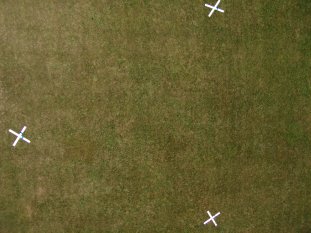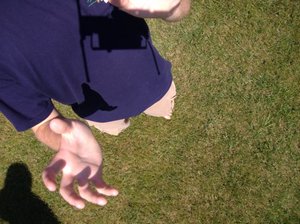|
|
Andy came back to the Mando today and he inspired us to create this
 complete with swans complete with swans
What is it you may ask? It’s a revolutionary multi-functional piece of living room furniture. The full implications of this exciting new gadget are not yet realized. As a chair it has two or possibly three settings. It’s great for playing guitar. It can be used as a planter. It also has ample storage space in the tank and in the bowl if desired.
Although Colin and I worked for hours making the wooden platform and fastening it to the bottom of new creation, I will give credit where credit is due. The truth is that if it weren’t for Dr. Andrew Christoper McCall, our toilet wonder would not be in existence today. Thank you Andy and everything that you have done for us. It’s quite special. I hope you think so as well. From all of us at the Mando, farewell Andy. We hope all is well at your new abode in Hoffman. If not we’ll always have a spot on the floor with your name on it; literally (just kidding). If you want we can write your name on the toilet though






In general, the two main differences between ’99 South and the main common garden (for damage assessment and herbivory) appears to be less damage in ’99 South and more ants (and less ant diversity).
When doing phenology in the ’99 common garden about a week ago I noticed that the plants in the eastern-most row (those along the very edge) appeared to be more likely to have ants and (very anecdotally) seemed to have a different amount of florivery damage and browning than the rest of the garden (it’s been too long owing to my laxness in flogging and I can’t remember if it was less or more, though I am inclined to say less). Whether there actually is a difference in damage and whether this difference results from ants, edge effects, or chance remains to be seen.
A few days ago when I was doing phenology in the ’99 South common garden I noted that the majority of plants in the garden had ants and that there was low variability in ant species composition – virtually all I saw where the large black ones with red heads. These ants were very aggressing and would leap off the flower head onto my stylus as I was pointing at the anthers to count them. I could practically hear them sharpening their mandibles. The northern-most row (those along the very edge) had few ants and the ants were of different species, including small black ones and light-colored ones. Interestingly, there was much more damage in this row.
Are these large ants actively defending their flower heads and increasing plant fitness?
Do other species of ants contribute less to the echinacea in terms of defense? Do they take more away in terms of pollen and nectar? It is not uncommon to see ants covered/dusted in pollen (I never observed this of the large black species) and I have twice seen a small black ant actively carrying pollen in its mandibles.
The Bee team has been busy (I’m avoiding including a bad pun here) lately. We have implemented and perfected our tracking protocol in the past couple of mornings, and have gotten some good data looking at the flights between flowering heads in the Common Garden. Yesterday morning we successfully tracked the flight of one bee to 57 consecutive heads! For the most part, we have been faithful to the original protocol, although we have found that working in groups larger than two is more successful.
We discovered yesterday that the bee we have been identifying as Halictus rubicundus is actually neither that genus nor species. Stuart brought up a reference collection from the U of M, and our best guess is now that our bee is Melissodes cf. subillata.
Overall, today went pretty well. We managed to get the camera up on the small kite. 
The wind gave us a few problems, though. The camera came down a few times and we had to run to grab it. 
The big kite, however, had issues. After letting it out around 80 meters, the kite took a dive to the right… into a building. WHAM. This isn’t a sound you want to hear. A few tears on the front, but not horrible. The problem came when Stuart was moving the kite. A gust of wind caught the kite around him. SNAP. Another bad sound. The carbon-fiber sticks were fine; an aluminum connector was not.
We had a great picnic at Elk Lake Beach on the fourth. The wind off the lake was refreshing & would have been great for kite flying. Instead we ate great food, sat on the dock, swam, kicked the soccer ball, tossed a disk, and ate great food. The company was marvelous: Amy, Colin, Dwight, Gretel, Hattie, Ian, Jameson, Jean, Josh, Julie, Per, Pete, Rachel, Sarah, & Stuart. Folks stayed for about four hours and some got a little too much sun. The water was pleasantly warm, but a little greener than usual. I didn’t take any photos.
Here are some key resources:
Kensington general forecast and 48-hour surface wind forecast (from NWS in Minneapolis).
Hoffman general forecast and 48-hour surface wind forecast (from NWS in Grand Forks).
Current conditions at nearby weather stations.
We forgot our list of what specific heads to video for each plant, so I decided, in the field, to just video the one with a twist tie color that comes first in the alphabet. I think we’ll use this method from now on as it is at least haphazard and it’s easy to remember.
Also, three of our rigged batteries failed immediately. I hope my big batteries from B and H come soon!
Video Andy
Several pictures of the Bee Team marking bees.


This morning, due to a revolutionary development in our marking protocol, the Bee team members caught and marked 6 Halictus rubicundus in a relatively short amount of time. The secret to our success was capturing the bees and cooling them before any painting was attempted, instead of trying to mark them while they worked the Echinacea heads. Tomorrow we will spend a good portion of the morning marking bees in the common garden, and then hopefully be able to train the rest of the crew in, so that we can begin taking data in earnest later in the week. Read on for new and revised protocols…

Bee Painting Protocol
Needed Equipment:
-lunch box coolers, each with an ice pack and several glass vials
-paint applicator and bandolier
-insect net
-visor, with random number list and bee07 form
1. Walk rows as prescibed by the random number list with a partner, scanning 4rows across for bees on Echinacea heads
2. Catch any bees with the insect net (being careful of flower heads!) and transfer the bees to a chilled vial
3. Keep bees in cooler until sufficiently chilly and slow (approx 3-5 min)
4. Transfer bee from the vial to a flat working surface (plastic bag on top of the ice pack works well) and paint a small dot of the appropriate color on to the middle of the thorax
5. Allow the bee to warm up, and release it in the same vicinity in which it was caught
6. Record all necessary data (including bees species, paint color, plant coordinates etc) in the visor
Tracking Protocol
Needed Equipment:
-binoculars
-color key pallet
-visor, with random number list and bee07 form
We haven’t yet tested this protocol, and there will probably be some revision/elaboration before it gets implemented. But this is the current plan:
1. Working in pairs, walk random rows, searching the 4 adjacent rows for bees.
2. When a bee is located, track it for as many consecutive flights as possible (we anticipate that one person should be visually tracking the bee, while the other partner records data in the visor, and assists with tracking when not data taking)
|
|
complete with swans


